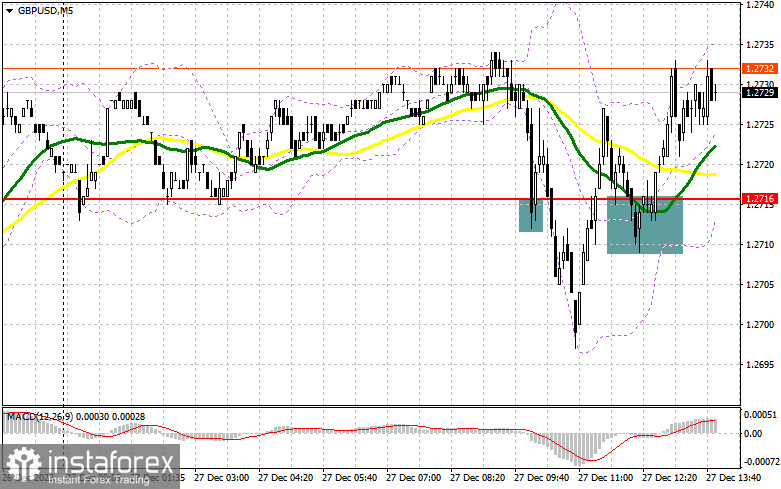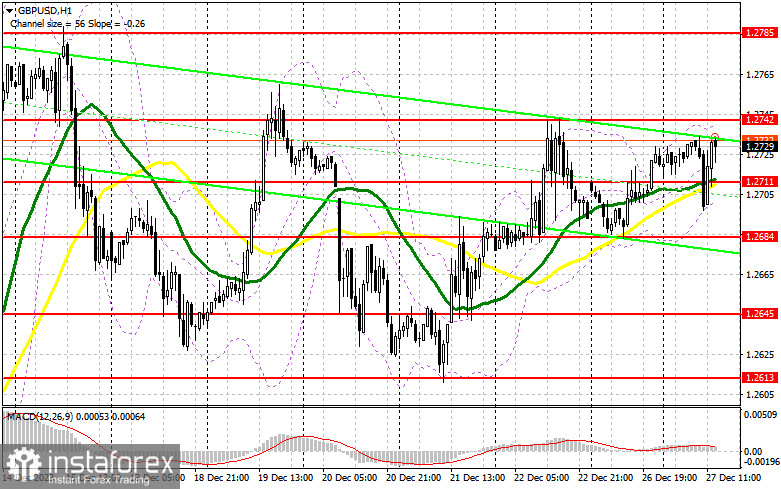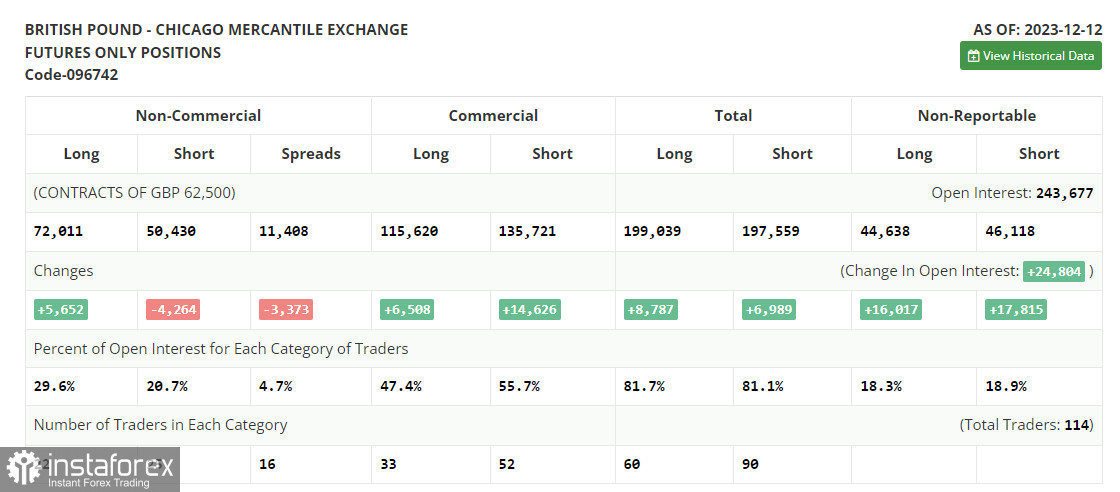In my morning forecast, I drew attention to the level of 1.2716 and planned to make trading decisions based on it. Let's look at the 5-minute chart and analyze what happened there. The decrease and the formation of a false breakout at this level led to a buy signal for the pound. However, no significant upward movement resulted in a loss of fixation. After returning to 1.2716 and a retest from top to bottom, another buy signal for GBP/USD was formed. When writing the article, the pair has moved up about 15 points. The technical picture was slightly revised for the second half of the day.

To open long positions on GBP/USD, the following is required:
Data on the Richmond Fed Manufacturing Index lies ahead. These figures are unlikely to interest traders seriously at the end of the year, so volatility will remain at the same level. In case of a pair decline, I will act after forming a false breakout at 1.2711, where the moving averages supporting the buyers are located. This will signal an entry into the market to increase to around 1.2742. A breakout and consolidation above this range will strengthen demand for the pound and open the way to 1.2785. The ultimate target will be the area of 1.2820, where I plan to take profits. In the scenario of the pair's decline and the lack of activity from the bulls at 1.2711 in the second half of the day, as this level acts as a kind of midpoint of the sideways channel, only a false breakout around the next support at 1.2684 will give a signal to open long positions. I plan to buy GBP/USD immediately on the rebound only from 1.2645, aiming for a correction within the day by 30-35 points.
To open short positions on GBP/USD, the following is required:
Sellers still have a chance for a pair correction, but their activity is required around 1.2742. An unsuccessful attempt to consolidate above this level will provide an entry point for short positions with the prospect of returning to 1.2711, where the moving averages limit the further downward potential of the pair. A breakout and a retest from the bottom to the top of this range will deal a more serious blow to bullish positions, leading to the triggering of stop orders and opening the way to 1.2684, where buyers are expected to be more active, as this level serves as the lower boundary of the channel. The ultimate target will be the area of 1.2645, where I plan to take profits. With GBP/USD rising and the lack of activity at 1.2742, a bullish market will continue. In this case, I will postpone selling until a false breakout at 1.2785. If there is no downward movement, I plan to sell GBP/USD immediately on the rebound from 1.2820, but I am only counting on a pair correction down by 30-35 points within the day.


Indicator signals:
Moving Averages
Trading is above the 30 and 50-day moving averages, indicating further pound growth.
Note: The author determines the period and prices of moving averages on the hourly chart H1 and differs from the general definition of classical daily moving averages on the daily chart D1.
Bollinger Bands
In the event of a decline, the lower boundary of the indicator, around 1.2700, will act as support.
Description of indicators:
- Moving average (determines the current trend by smoothing volatility and noise). Period 50. Marked on the chart in yellow.
- Moving average (determines the current trend by smoothing volatility and noise). Period 30. Marked on the chart in green.
- MACD indicator (Moving Average Convergence/Divergence — convergence/divergence of moving averages). Fast EMA period 12. Slow EMA period 26. SMA period 9.
- Bollinger Bands. Period 20.
- Non-commercial traders - speculators, such as individual traders, hedge funds, and large institutions, use the futures market for speculative purposes and meet specific requirements.
- Long non-commercial positions represent the total long open position of non-commercial traders.
- Short non-commercial positions represent the total short open positions of non-commercial traders.
- The total non-commercial net position is the difference between non-commercial traders' short and long positions.





















